Early Litearcy Aside--Explain: Today our early literacy tip is on letter knowledge. You may think of letter knowledge as being able to write letters. Actually there is a lot to know related to letter knowledge long before children can write the letters. One aspect is recognizing shapes. Today I'll be pointing out some fun ways we can help them recognize and talk about shapes.
Print Awareness--Explain Aside
Early Literacy Aside--Explain: Our early literacy tip of the day today is on print awareness. There are many ways we can help children understand that print has meaning. Research studies point out that about 95% of a child's attention goes to the pictures. Today in storytime I'll be pointing out some ways we can help them focus on the print as well.
Reading--Language of Books
Early Literacy Aside--Explain: Reading is one of the best ways to introduce new words to your children. Many books have unfamiliar words. ones we would not use in regular conversations with our children. Talking about even one or two of the words before, during or after reading the book is one way to build your children's vocabulary. Knowing lots of words, having a large vocabulary, helps children not only understand what they later learn to read, it also helps them recognize words when they later try to sound them out. Today we'll see how the language of books expands your child's vocabulary.
Rhyme Along with Me
[When you read a rhyming book or say a rhyme, you can pick two rhyming words and then sing this song to emphasize the rhyming words.]To the tune of Row Your Boat: Rhyme, rhyme, rhyme along, rhyme along with me Small and tall are rhyming words [or whatever two words you are rhyming] Now rhyme along with me. Early Literacy Aside--Example: Emphasizing words that rhyme helps children hear the rhyme. Being able to hear the smaller sounds in words helps develop their phonological awareness, a skill that will help them be able to sound out words when they later learn to read.
Pamela Martin-Diaz, Allen County (IN) Public Library
These Words Rhyme
After reading a book that rhymes, I read the book and then come back to a page that have two rhyming words. We talk about the words that rhyme and then sing a song [to the tune of "Skip to My Lou"]Small, tall [or whichever two words you have noted] these words rhyme Small, tall, these words rhyme, Small, tall, these words rhyme, Rhyme along with me. [You can also do this with a nursery rhyme, pointing out two rhyming words.] Early Literacy Aside--Example: Helping your children to recognize and say rhyming words helps them hear the smaller sounds in words, which develops phonological awarness. This is a skill that will later help them sound out words when they learn to read.
Idea from Pamela Martin-Diaz, Allen County (IN) Public Library
Who Took the Farmer's Hat? by Joan Nodset
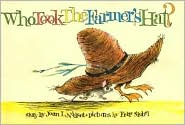
Submitted by Linda Gosnell, Pamunkey (VA) Regional Library
Little Red Hen
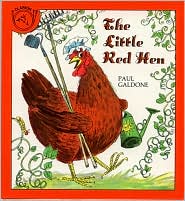
Submitted by Phyllis Arbogast, Blackwater (VA) Regional Library, Carrollton Branch
Mouse Craft
Craft: Give a piece of paper and crayon or marker to each child and adult. Each person can draw an oval for the body of the mouse. For the ears make an M or m. Let's practice making an M in the air with our hand and arm.Early Literacy Aside--Example: Don't worry about if your child does this exactly right or not. Enjoy making the mouse and help him squeak and talk. You can also talk about the shapes your child is drawing. Seeing and making shapes helps your children recognize letters as well.
Is Your Mama a Llama? by Deborah Guarino
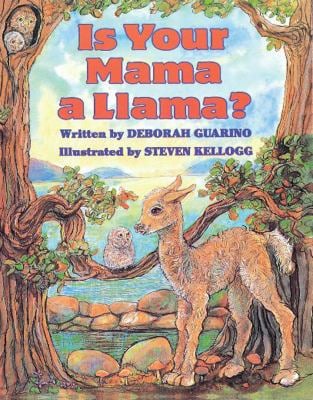 Early Literacy Aside--Explain:The ability to hear and play with the sounds of words, as in rhyming, is an important skill for reading. To recognize these rhymes and how words are related by sound is part of what educators term phonological awareness and will help your children later sound out words.During the storytime, read the book Is Your Mama a Llama? by Deborah Guarino
Each page describes the animal that might be llama's mother. Let's guess what will come on the next page. I will emphasize the word that will rhyme on the next page. For example, if I say now, guess what animal we will see. The author gives us other clues, like brown and moo. So, we know the animal will rhyme with now is COW!
Early Literacy Aside--Example: Some books, like this one, use rhymes in a playful way. Playing with rhyming words is one good way to help children hear the smaller sounds in words which will later help them sound out words when they learn to read.
Early Literacy Aside--Explain:The ability to hear and play with the sounds of words, as in rhyming, is an important skill for reading. To recognize these rhymes and how words are related by sound is part of what educators term phonological awareness and will help your children later sound out words.During the storytime, read the book Is Your Mama a Llama? by Deborah Guarino
Each page describes the animal that might be llama's mother. Let's guess what will come on the next page. I will emphasize the word that will rhyme on the next page. For example, if I say now, guess what animal we will see. The author gives us other clues, like brown and moo. So, we know the animal will rhyme with now is COW!
Early Literacy Aside--Example: Some books, like this one, use rhymes in a playful way. Playing with rhyming words is one good way to help children hear the smaller sounds in words which will later help them sound out words when they learn to read.
Maisy Big, Maisy Small by Lucy Cousins

Submitted by Ellen Abramson, Fairfax County (VA) Public Library System
This Is the Way We Wash Our Face
Song: This Is the Way We Wash Our Face (Sung to the tune of Here We Go 'Round the Mulberry Bush)
Let's sing this song and tell a little story about how we take a bath.
"This is the way we wash our face (actions to words to all these)
shampoo our hair scrub our skin dry with a towel, etc. Early Literacy Aside--Example: This song helps us learn different vocabulary words about bathtime, like shampoo and scrub. I hope you will talk about this when you take a bath tonight. What other words can you come up with? Talking about interesting, fun words like this will help your children recognize words later on when they read them.
Submitted by Stacey Harwood, Henrico County (VA) Public Library, Twin Hickory Branch
Let's Go Froggy by Jonathan London

Submitted by Charles Nagel, Chesterfield County (VA) Libraries
Little Bunny Foo Foo: Told and Sung by the Good Fairy by Paul Johnson
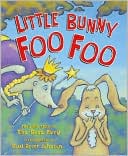
Submitted by Jackie Anas, Portsmouth (VA) Public Library
Making Gingerbread Fingerplay
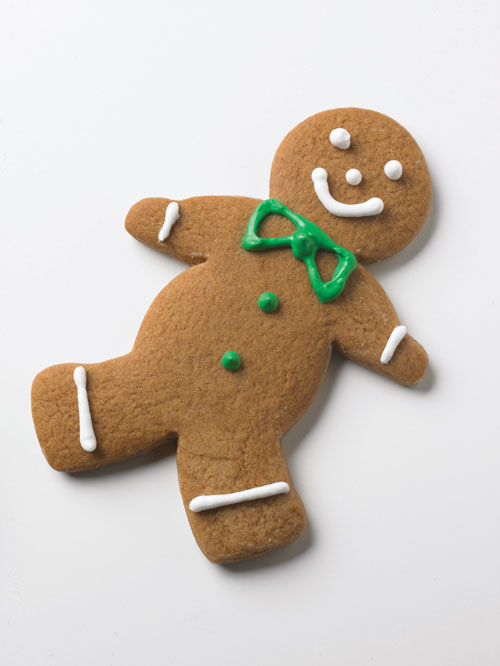 Fingerplay:Stir a bowl of gingerbread (pretend to stir)
Smooth and spicy brown
Roll it with a rolling pin (pretend to roll dough)
Up and up and down
With a cookie cutter (imitate)
Make some little men
Put them in the oven (imitate)
'Til half past ten! (pretend to look at watch)
Early Literacy Aside--Example: Rhyming is one way that children learn to hear the smaller parts of words, also called phonological awareness. Talking about the words that rhyme as you say rhymes with your children will better prepare them to read when they begin to sound out words in school. Adding motions makes it more fun!
Fingerplay:Stir a bowl of gingerbread (pretend to stir)
Smooth and spicy brown
Roll it with a rolling pin (pretend to roll dough)
Up and up and down
With a cookie cutter (imitate)
Make some little men
Put them in the oven (imitate)
'Til half past ten! (pretend to look at watch)
Early Literacy Aside--Example: Rhyming is one way that children learn to hear the smaller parts of words, also called phonological awareness. Talking about the words that rhyme as you say rhymes with your children will better prepare them to read when they begin to sound out words in school. Adding motions makes it more fun!
Submitted by Amy Cook, Henrico County (VA) Public Library--Tucahoe Area Library
Hickory Dickory Dock or Any Nursery Rhyme
 Early Literacy Aside--Empower: Nursery rhymes are important to do with your children, not only here in storytime, but at home as well. The rhyming and repetition of words helps your child develop the awareness of different word sounds. This helps develop their phonological awareness which is important for later sounding out words. Also, nursery rhymes are fun to sing and act out!
Submitted by Michelle Edwards, Gloucester Library (VA)
Early Literacy Aside--Empower: Nursery rhymes are important to do with your children, not only here in storytime, but at home as well. The rhyming and repetition of words helps your child develop the awareness of different word sounds. This helps develop their phonological awareness which is important for later sounding out words. Also, nursery rhymes are fun to sing and act out!
Submitted by Michelle Edwards, Gloucester Library (VA)
Train Goes Clickety-Clack by Jonathan London

Feathered Friends Storytime Plan
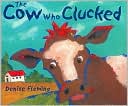
Feathered Friends Storytime Plan
Submitted by Donna Johnson, Sioux City (Northwest Library Service Area, Iowa) Public Library
Babies Everywhere Storytime Plan

Babies Everywhere! for Two and Three-Year-Olds Submitted by Debbie Stanton of Kalona (Southeast Iowa LSA) Public Library
Little Red Hen

ReadTheLittle Red Hen. As your read the repeated phrases, "Not I," said the dog;"Not I," said the cat; "Not I," said the mouse, run your finger under those words as you say them.
Early Literacy Aside--Example: Running your finger under some of the words helps your child understand that it is the words you are reading, not the pictures. Researchers have found that even for four year olds, 95% of their attention is on the pictures. By pointing you help draw their attention to the text. This helps develop print awareness.
Mouse Shapes by Ellen Walsh

Read the book Mouse Shapes by Ellen Walsh.
Early Literacy Aside--Example: As I read the book, you'll notice how we can combine talking about shapes as we also talk about what is happening in the story. Helping children see shapes is the beginning of letter knowledge.
Craft: Have various shapes cut out, the same ones used in the book. Each PERSON gets a blank sheet of paper. Using shapes, they make a picture. Encourage the adults to talk about all the shapes and also about what they are making with the shapes, both their own picture and their child's. The adult or child can write the child's name on their the paper and find some of the shapes in the letters.
Early Literacy Aside--Empower: Playing with shapes is one way to help your child see shapes in letters and to later identify the letters. For example, this is an N the first letter in your name. See how there is a triangle shape between the lines? You will notice many opportunities during your day to talk with your children about shapes.
